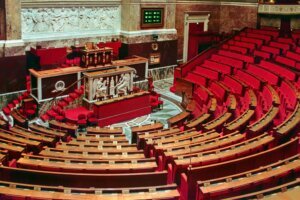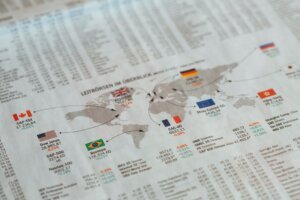Monetary vs. Fiscal Policy: How Governments Control the Economy
Imagine the economy as a massive ship. When waters get rough, who steers it to safety? Two powerful forces: Monetary Policy (the central bank’s wheel) and Fiscal Policy (the government’s engine).
Whether you’re applying for a mortgage, running a business, or just buying groceries, these policies silently shape your financial life. Let’s decode how they work—and why you should care.
Economic Policy: Who’s Driving the Economy?
Economic policies are deliberate strategies designed to keep a country’s economy stable and growing. They focus on controlling inflation, which affects everyday expenses like grocery bills, maximizing employment to ensure job security, stimulating business growth and opportunities, and stabilizing the currency to manage import and export costs effectively.
The two heavyweights are:
Fiscal Policy – The government’s tax & spending plan
Monetary Policy – The central bank’s money supply control
(Bonus: I’ll also cover Trade Policy—the wildcard that impacts global business.)
Fiscal Policy: The Government’s Budget Power Play
Fiscal policy is the government’s tool for managing the economy through decisions about taxation and spending. By adjusting these, the government can stimulate growth during slowdowns or cool things off when the economy overheats. It’s a powerful way to influence jobs, inflation, and overall economic health.
How It Works:
| Tool | Stimulate Economy (Recession) | Slow Economy (Inflation) |
|---|---|---|
| Taxes | ▼ Cut taxes (people spend more) | ▲ Raise taxes (reduce spending) |
| Spending | ▲ Boost infrastructure projects | ▼ Cut public programs |
Real-World Examples:
✔ 2008 Financial Crisis – U.S. launched a $787 billion stimulus (tax cuts + infrastructure)
✔ Vietnam 2020 – Increased public investment by 34% post-COVID to revive growth
✔ Germany’s “Schuldenbremse” – Constitutional debt brake to limit overspending
Fiscal policy affects you directly in several ways. Tax cuts can put more money in your pocket by increasing your take-home pay. When the government invests in infrastructure, it creates new jobs and improves roads and public facilities. On the other hand, austerity measures often mean fewer public services, which can impact everything from healthcare to education.
Monetary Policy: The Central Bank’s Interest Rate Game
Monetary policy is how a country’s central bank, such as the Federal Reserve or the European Central Bank, manages the money supply and interest rates to keep the economy balanced. By raising or lowering interest rates, the central bank can control inflation and influence borrowing, spending, and investment. This “interest rate game” plays a big role in shaping the overall economic health and your personal finances.
How It Works:
| Tool | Stimulate Economy | Fight Inflation |
|---|---|---|
| Interest Rates | ▼ Cut rates (cheaper loans) | ▲ Hike rates (expensive loans) |
| Bond Buying (QE) | ▲ Print money → More liquidity | ▼ Sell bonds → Reduce cash |
| Reserve Ratios | ▼ Banks lend more | ▲ Banks lend less |
Real-World Examples:
✔ 2022 U.S. Inflation Fight – Fed raised rates from 0.25% to 5.5% in 18 months
✔ Japan’s Lost Decades – Kept rates near 0% since 1999 to fight deflation
✔ Vietnam 2023 – SBV cut rates 4 times to help businesses recover
Monetary policy affects you in everyday ways. When interest rates are lowered, mortgages and car loans become more affordable, making it easier to borrow. On the other hand, higher rates mean better returns on savings but also more expensive debt. Additionally, when central banks use tools like Quantitative Easing (QE), it can lead to booms in stocks and real estate markets, impacting your investments and housing costs.
Trade Policy: The Global Economy’s Rulebook
Trade policy sets the rules for how a country buys and sells goods and services with other nations. It determines tariffs, quotas, and regulations that affect imports, exports, and foreign investment. These policies shape the global flow of products and can influence prices, availability, and economic relationships worldwide.
Key Tools of Trade Policy:
- Tariffs (Taxes on imports) → Protect local industries
- Quotas (Import limits) → Control foreign competition
- Free Trade Agreements (FTAs) → Boost exports
Real-World Examples:
✔ U.S.-China Trade War – Trump’s $360B tariffs reshaped global supply chains
✔ Vietnam’s EVFTA Deal – Exports to EU jumped 17% in 2023
✔ India’s Tech Import Curbs – Forced Apple/Samsung to manufacture locally
Trade policy impacts you in several ways. Tariffs can make everyday products like iPhones more expensive by increasing import costs. On the flip side, free trade agreements (FTAs) can open up new export opportunities for businesses, boosting economic growth. However, trade wars and disputes may lead to job losses in industries caught in the crossfire, affecting local communities and workers.
Fiscal vs. Monetary: Key Differences
| Factor | Fiscal Policy | Monetary Policy |
|---|---|---|
| Controller | Government (Politics) | Central Bank (Independent) |
| Tools | Taxes, Spending | Interest Rates, QE |
| Speed | Slow (needs laws) | Fast (market reaction) |
| Best For | Jobs, Inequality | Inflation, Currency Value |
Conclusion
Why Fiscal Policy and Monetary Policy Matter to You
These policies have a direct impact on your daily life—from the interest rate on your mortgage (monetary policy) to how much you pay in taxes (fiscal policy), and even the price of your iPhone (trade policy). Understanding them helps you make smarter financial decisions: entrepreneurs can look out for grants and tax breaks, investors should watch central bank moves like rate hikes, homebuyers benefit from locking in low mortgage rates, and savers can take advantage of high-interest periods for better returns.
What’s Next?
As the world evolves with AI, climate change, and shifting global ties, future policies might include things like digital currencies replacing cash, green quantitative easing to fund environmental projects, and wealth taxes aimed at addressing income inequality. Staying informed will help you adapt and benefit from these changes.





Comments